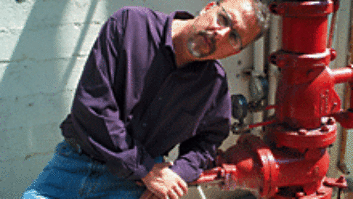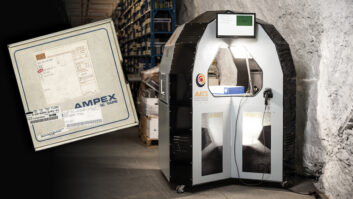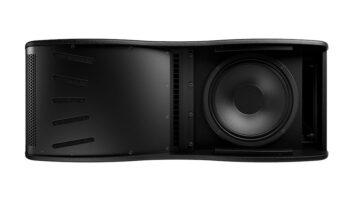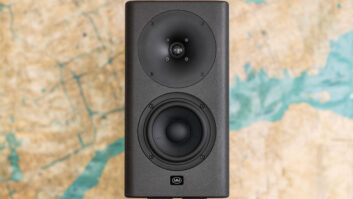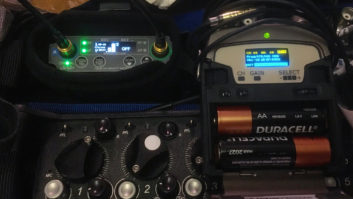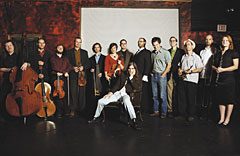
Composer Graham Reynolds, surrounded by Austin’s finest
Drug-induced paranoia: If you want to know what it looks like, ask A Scanner Darkly director Richard Linklater and his team of rotoscoping animators. If you want to know what it sounds like, listen in on the film’s soundtrack by fellow Austinian Graham Reynolds.
The composer began working on Linklater’s film, based on Philip K. Dick’s book about the effects of drug use on an undercover narc (Keanu Reeves) and those within his world, even before Linklater began shooting. Later, it was converted to an eerie animated feature. “He gave me a script very early on,” Reynolds recalls. “Rick had been watching Last Tango in Paris at the time and was liking the music,” prompting the suggestion of a saxophone-centered score with all acoustic instruments, creating a jazz noir sound.
“The idea that we started with was to keep it all acoustic, under the theory that if you use processed or electronic instruments, it tends to date the music,” Reynolds says. “The film takes place seven years in the future, and I didn’t want someone seven years from now saying, ‘Oh, that sounds exactly like 2006.’”
After receiving a rough cut of the video footage on which the animation would be based in the fall of 2004, Reynolds began recording with various players from his local Golden Arm Trio, a group whose members rotate, but always includes Reynolds. The arrangements contained sax, upright bass, piano, vibes and drums, which the composer recorded at his bedroom home studio, Red House Studio. “It’s one long room, with the desk at one end with the recording stuff, all the equipment in the middle and then the bed at the far end,” he says. “It’s a big bedroom, but it’s a bedroom.”
Reynolds recorded into MOTU’s Digital Performer using a MOTU 896HD interface and “a whole collection of cheap mics,” he says. These included an AKG C1000S to cover vibes and glockenspiel, and CAD KBM-412 and MXL V67 for recording any number of bass drums. “I’m a big fan of bass drums,” Reynolds notes, pointing out his collection that ranges from 20-inch- to 40-inch-wide drums with a variety of beaters, all of which can be heard in the film. Reynolds also made use of Earthworks TC30K omnis.
For the first half of the sessions, Reynolds handled the recording himself, but later added a longtime cohort, musician and engineer Buzz Moran. “Buzz has been my second pair of ears,” Reynolds explains. “He not only has good judgment, but he’s also a great engineer.”
As the animation began rolling in — prompting occasional music changes for previously unseen animated objects now showing up onscreen — it became apparent that the sax-oriented jazz noir score may not have been the most suitable approach. “After each meeting Graham went to, it became more and more apparent that what they wanted was something more electronic and trippy,” Moran recalls.
“The characters are on drugs for the whole movie, and the music didn’t quite connect with that,” notes Reynolds. “Drugs haven’t been associated with acoustic instruments in a long, long time.”
The solution lay in an inexpensive collection of plug-ins, Cycling ’74’s Pluggo. “I bought a cheap set of plug-ins and just started processing what we had, making it unrecognizable by transforming it,” Reynolds says. “We just started peeling away the saxophone layers. In some cases, we were able to build cues with the other instruments that had already been recorded, and, in other cases, we started from scratch.”
Reynolds and Moran ran the gamut of what Pluggo had to offer, changing and warping the instruments to match the dismal, drug-warped vision of Reeves’ Bob Arctor. “I was putting these plug-ins on and taking the acoustic instruments and processing them, and the more I did it, the more Rick liked it,” says Reynolds. “But everything on that score began as the recording of an acoustic instrument.”
Rounding out the palette was a variety of unusual instruments, some of which required no processing (but were often the recipients of such manipulation nonetheless). Prominent in the score is Reynolds’ vibraphone played with a cello bow, producing a sound not unlike that produced by running a wet finger around the rim of a wine glass. “Unlike a synthesized sound, you get this kind of reedy, bowed sound that’s not at all the clean, pure tone you’d get from a synthesizer,” Moran explains. “And then that helps once you’ve put all these effects on top of them.”
Another eerie sound was created by a bowed wood saw, played by another Austin musician, Jeff Johnson. “He’s known around Austin for bringing in an old record player and playing old 45s, playing the melody along with the saw,” Reynolds says. The composer also took advantage of Austin’s country music community, which offered up former Dale Watson pedal steel player Ricky Davis for one tune. “We’re blessed with all these amazing steel guitarists,” Reynolds says, “all these people who used to play with big country guys who retire and then start playing gigs.”
Reynolds and Moran added various electric guitars to the tracks, ranging from the composer’s wild, Jimi Hendrix — like rides to Moran’s surfer rhythms on “Your Move, Peterbilt.” The two mixed the soundtrack into between three and six stems, which Reynolds then brought to re-recording mixers Skip Lievsay, Tom Hammond and Jeremy Pierson for the dub at Warner Bros. in Burbank, Calif., last April.
The digital recording process was new for Reynolds and Moran, and it successfully places the audience in the uncomfortable world of the film’s drug-addicted characters. “I hadn’t done much computer recording, and Graham started learning when he bought the program to do this soundtrack,” admits Moran. “The whole process, we were pretty much waiting for somebody to catch us and say, ‘You can’t make a soundtrack that way!’”

